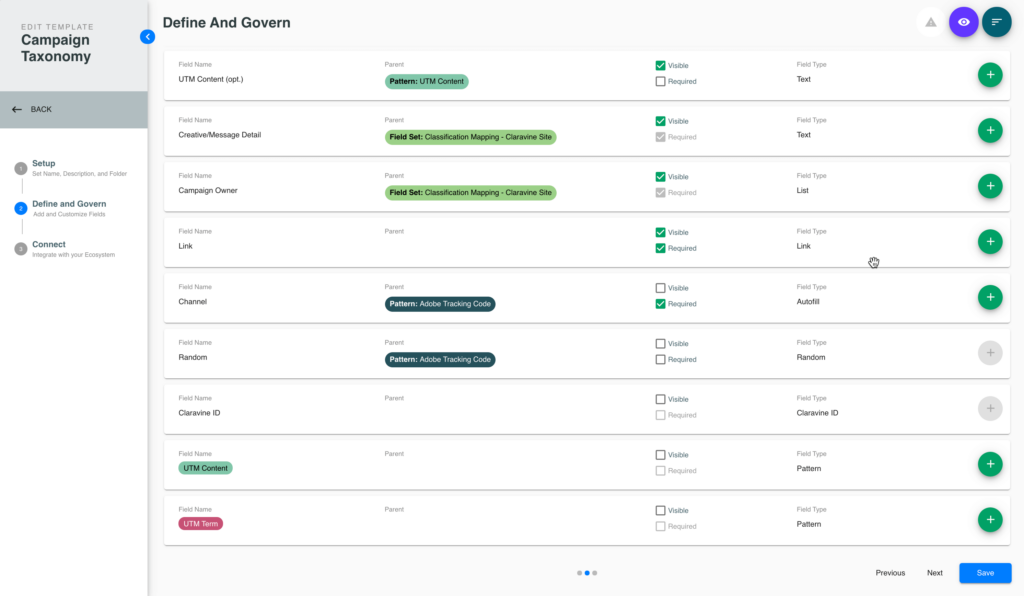Align your Tracking Taxonomy in 3 Steps
The companies I work with spend millions of dollars on digital marketing programs and hundreds of thousands of dollars on analytics, business intelligence, and data visualization tools. But at some point, a senior marketing leader always realizes they aren’t getting the value they expected from those expensive tools.
The problem is that the insights they get are incomplete. It’s because each marketing team or agency is using its own taxonomy to track their individual performance— that is, they’re applying different labels to the attributes being tracked. Each marketing team and agency is operating in silos. They may have what they consider to be “standardized tracking”, but do not realize or see the downstream impact of the tracking they chose to implement.
Because your analytics platform is the main endpoint that all of these marketing tactics are driving traffic to, you need all of your marketing teams to use a consistent taxonomy in order to enable valuable insights across channels and platforms. This will make your data more valuable and ultimately give you a higher return on your marketing spend. And your analysts, who might be spending 40% of their time manually cleaning up data, can focus more of their time finding insights and making recommendations for optimization.
Follow the steps below to create a consistent campaign tracking taxonomy for your organization. Like so many things in business (and in life), the process starts and ends with better communication.
1. Make sure the analysts have a clear understanding of each marketing team’s business goals and reporting needs.
In most organizations I’ve worked with, the analytics team drives the process of aligning the taxonomy. If you’re an analyst, you’ll need to spend time with each marketing team individually. Ask about their goals and objectives, the platforms they manage, their campaign roadmap, their current process for executing campaigns, and the types of data they need to measure their success. As they describe their process, you can often tell what their pain points are from their tone of voice and body language. But it doesn’t hurt to ask, “What’s difficult or painful about this process?” Or to offer additional value, you can ask, “what would you like to get out of your reporting that you currently do not?”

I’ve worked with companies that think simply buying a tool to manage or govern their data will solve all their campaign tracking problems, so they skip over the initial discovery process. They don’t gather detailed data requirements from the various marketing teams, and they don’t explain to them the value they’ll get from using a consistent taxonomy. That’s a mistake. If you take shortcuts during the discovery process, you’ll end up with a taxonomy that people won’t want to use — either because it doesn’t meet their needs or because they don’t understand how it could make their life better. This initial step not only helps understand requirements, but it helps build that initial relationship which is going to be critical when asking the teams to adopt this new process.
2. Map out the current taxonomy for each marketing team and agency.
As part of this step, you’ll want to document each team’s current tracking code taxonomy and metadata requirements. These requirements include elements such as the values or parameters that need to be appended to the final URL each time an ad or creative asset is published. Are they using an agency? If so, you’ll want to meet with the agency, because most internal teams aren’t too familiar with the workflows that happen on the agency side. By documenting what happens after creative assets and other campaign elements are passed to the agency, you may surface some tracking gaps.
The client is often unfamiliar with the taxonomy the agency is using. For example, sometimes the client is surprised to learn that the agency hasn’t been appending the campaign parameters for the client’s web analytics system — they’re just pulling reports from the ad manager platform and sending those performance reports to the client. It’s helpful to ask the agency to provide a sample taxonomy before the meeting so that you can prepare some specific questions.
3. Agree on which data fields will be collected and how those fields will be labeled.
As a best practice, all your teams should align on about five parameters to track consistently across all channels, using the same structure for campaign names and marketing objectives. Having a handful of common data points lets you do holistic reporting and multichannel attribution within your analytics platform. You can pull a report that shows, for example, which channel is most efficient at driving conversion at the top of the funnel. Don’t worry about finding alignment across teams for every single parameter — that’s never going to happen, and it isn’t necessary as available variables vary across channels.
Most organizations can agree on five common data points fairly quickly. Each team can then choose up to 10 additional parameters they want to track for their own reporting purposes. I’ve seen teams that want to track as many as 40. I’d say if your total list is longer than 15, you should rethink your approach to see if all those data points are providing value. You don’t want to get to the point where you’re adding data just to add data.

It’s important to note here, when we talk about the additional parameters, we’re talking about the meta data associated with the tracking code, not the tracking code itself. The tracking code taxonomy should be consistent across channels. This will vary slightly depending on if you are using Google UTMs, Adobe tracking code or Google’s utm_ID. Additionally, if you chose to use link obfuscation, that taxonomy of the tracking code will change to a random text string and likely start with a channel abbreviation.
Communicate early and often for tracking success
If you follow the three steps I’ve just outlined, you should end up with a taxonomy that works well for all of your marketing teams. Then you’ll only need to make small adjustments as your data needs evolve with time. Sometimes an organization adopts a taxonomy, deploys a system like Claravine to enforce those data standards, and then goes back a few months later and makes significant changes to their taxonomy. That’s usually because they didn’t ask the right questions up front.
I’ll say it one more time: Don’t take shortcuts during the discovery process. Assessing your current situation is a critical step in creating a taxonomy people will use, and one that will deliver tangible benefits to your organization. If you start those conversations early and educate people about the value they’ll get from using a consistent taxonomy, you’ll set yourself up for a seamless roll-out of whichever tool you choose to standardize and connect your data — and ultimately for campaign tracking success.
About the Author
 Christine Reges is an accomplished digital analytics professional with nearly 10 years experience helping organizations define and execute integrated, data-driven initiatives & analytics solution strategies. Her extensive analytics knowledge paired with her passion for collaboration and data, has garnered her roles at some of the largest global organizations and agencies; where she has been instrumental in analytics strategy and implementation. At Claravine, Christine is currently working as the Director of Solutions Consulting, helping organizations define best in class solutions to fit their data management needs.
Christine Reges is an accomplished digital analytics professional with nearly 10 years experience helping organizations define and execute integrated, data-driven initiatives & analytics solution strategies. Her extensive analytics knowledge paired with her passion for collaboration and data, has garnered her roles at some of the largest global organizations and agencies; where she has been instrumental in analytics strategy and implementation. At Claravine, Christine is currently working as the Director of Solutions Consulting, helping organizations define best in class solutions to fit their data management needs.



